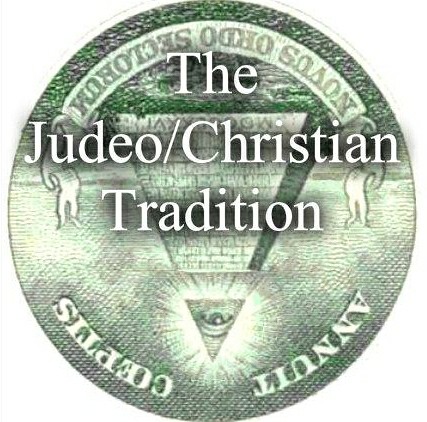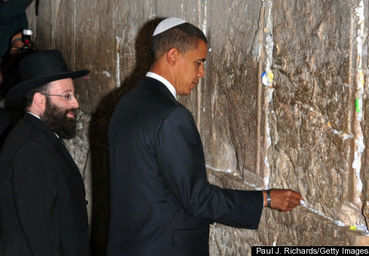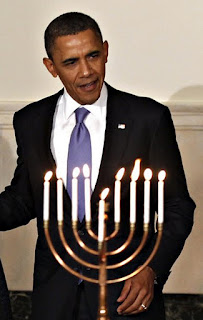The
LORD is my shepherd, I shall not want. He makes me lie down in green
pastures. He leads me beside quiet waters. He renews my soul. He guides
me in the paths of righteousness for His name’s sake. Even though I walk
through the valley of the shadow of death, I will fear no evil, for You are with me. Your rod and Your staff, they comfort me.
- Psalm 23:1-4
 The Bible Mentions Purgatory Many, Many Times
The Bible Mentions Purgatory Many, Many Times
What
does the Protestant nearly always say, with a sneer or a frown? Their
typical knee-jerk response will usually include the fact that the actual
Latin-based word 'Purgatory' does not appear anywhere in Scriptures.
Almost like clock-work, Mr. or Ms. 'Christian not Catholic' will
inevitably contend it's a lie, saying something like- 'The Bible never
mentions Purgatory, therefore it doesn't exist.' Well, the anti-Catholic
opponents of Purgatory may continue to ignore the elephant in the
middle of the room all they want, but that doesn't mean it's going away.
In fact, millions upon millions of Christians have believed in the
Purgatory elephant for nearly 2,000 years. Before that, Jews did, and as
it stands today both Judaism and more than half of the world's baptized
Christians continue to believe in Purgatory, regardless of the
hysterical denials heard from the Protestants.
The fact of
the matter is that many scholars have produced a growing body of
evidence proving that the Hebrew word Sheol, which is mentioned over 55
times in the Old Testament, and the Latin word Purgatory MEAN the SAME
THING. Therefore, the Bible does not mention Purgatory by name simply
because it was originally written in Hebrew (Sheol) and Greek (Hades)
and not Latin (Purgatorio). Due to the differing Biblical languages in
question, Purgatory is referred to in Scriptures as either Sheol or
Hades. Listed below are four different on-line authorities who have all
come to the exact same conclusion about the actual meaning of the words
Sheol in Hebrew,
Hades in Greek,
Purgatorio in Latin, and
Purgatory in English:
The word Purgatory is derived from the Latin Purgatorio, ("cleansing," "purifying") in Hebrew it's Sheol.
- Purgatory - Biblical and Patristic Insight, CatholicApologetics.info
“Sheol” is the Hebrew name for what could be Hades, Hell, Purgatory, or a well of souls-a holding tank.
- Book Review: Sheol Has Opened, ForewordReviews.com
I'm going to suggest that what the Latin word, "Purgatorio" signifies, that is the place where we are purged of disordered self-love, the Hebrew word, "Sheol" can also signify or denote. Just like the Greek word "Hades" can denote it. Three words, perhaps with the same reality, with proper distinctions made.
- Purgatory: Holy Fire, by SCOTT HAHN, CatholicEducation.org
Some Scriptural scholars claim Sheol or the Netherworld was the Jewish name for Purgatory...The evidence is...significant that Sheol signifies Purgatory. At
the very least, ancient Israelites believed in a place or state where
you would go when you die that was temporary, and neither heaven nor
hell.
- Chapter 23 -- Purgatory, CatholicApologetics.com
Tragically,
more than few Biblical scholars mistakenly insist the two words in
question, namely Hades and/or Sheol must always translate into the
English word Hell. This woefully misleading replacement of the words
Hades and Sheol with the English term Hell began with the 1611 King
James Version of the Bible Unfortunately, the Protestant Biblical
Scholars have boldly continued in their deceptive usage of the English
designation Hell when replacing the original Greek/Hebrew term called
Hades/Sheol. Knowing full well the word Hades/Sheol actually refers to
something very, very different from Hell, they silently carry on with
their deliberate mistranslation of nearly every Protestant Bible still
being published today. In the vain hope of denying Purgatory for the
next 1,000 years, certain Protestant authorities have conspired to leave
most readers of Protestant Scriptures in the dark about the issue.
Sadly, the vast majority of God-fearing Protestants will never be made
aware of the real meaning behind the words Hades and Hades. Their naive
certainties about the evils of Catholicism destine most of them to an
ill-informed Protestant Christian faith which has been founded, not upon
zealous scholarship or pious reasoning, but upon generations of bigoted
ignorance concerning the many Biblical truths of Purgatory.
First
of all, Hell was considered a place of eternal damnation, while Sheol
and Hades were mostly viewed as somewhat miserable, but temporary
spiritual realms of suffering. Hell, and its never-ending duration,
could not possibly be the correct translation of either Hades or Sheol,
which were temporary abodes of the dead. Indeed, the New Testament shows
that Jesus never uses these two terms to describe Hell. Instead He
refers to Hell, the land of eternal damnation, as Gehenna every single
time. Christ does mention the Sheol, or at least its upper regions,
using a particular set of words called the Bosom of Abraham (Paradise).
This spiritual haven for the righteous was deemed to be eternal so it
most definitely was not Heaven, but certainly was not Hell (Gehenna in
Hebrew). This specifically Hebrew land of the deceased could be compared
to some of the highest levels of Purgatory where there is far less
suffering than way below. Indeed, these peaceful, yet shadowy, regions
of the dead are, according to legend, presumed to be located fairly
close to the Divine light of Heaven.

Given
the actual definition of the word, any New Testament mention of the
Greek term Hades should simply be seen as yet another Biblical reference
to Purgatory. As with Christian Purgatory, Hades traditionally referred
to a temporary Greco-Roman land of the Gentile dead, which inevitably
led to Pagan Heaven (Elysium). After Christianity finally adopted Latin
as the official language of the Holy Bible and the Church, the original
Biblical names such as Hades and Sheol eventually became known as
Purgatory- defined as a temporary spiritual abode for most Christians
which preceded entry into Heaven. Thus the formula: Sheol = Hades =
Purgatory is both historically and metaphorically correct. Over time,
however, the Jews stopped referring to their version of Purgatory as
Sheol, calling it Gehenna instead. The Sheol, basically remained the
same centrally-located place stretching from the uppers levels which
bordered Heaven, to the pit of Hell at the very bottom. The Sheol was
now seen as having two distinct regions- an upper one meant only for the
righteous called Paradise (Bosom of Abraham), along with a much lower
region called Gehenna. This particular region which consisted of the
lowest depths within the entire Sheol was where the wicked spirits and
sinful souls of the condemned were punished, perfected and purified.
Thus, the Biblical words which define this unique three-tiered system
of the after-life in English, Greek, and Hebrew reads as follows:
TEXT: Salvation + Redemption + Damnation = Language and Religion
HOLY BIBLE: Heaven +
Purgatory + Hell =
English Christianity
NEW TESTAMENT: Elysium +
Hades + Tartarus =
Greek Paganism
OLD TESTAMENT: Gan Eden +
Sheol/Gehenna + Gehenna =
Hebrew Judaism
SOURCE DOCUMENT:
Purgatory + Hades + Sheol/Gehenna = English + Greek +
Hebrew
Deniers
of Purgatory should always remember that both the Jews, and the
Greco-Roman Gentiles who ruled them, basically agreed that the spiritual
world consisted of a three-layer system of the after-life, with the
vast majority of souls finding themselves in what is now called
Purgatory (Hades/Sheol). The reason behind this similarity in religious
thought, was due to their shared sense of logic and reason- the simple
common sense underlying these two doctrines. Both Jew and Gentile
recognized that, rather than being total Sinners or perfect Saints,
most people were a combination of both good and evil which required
some, but not never-ending punishment, after death. Indeed, Jews still
believe in a version of Purgatory even today and will sometimes call it
by that name rather than by the Hebrew expression Sheol/Gehenna. Even
so, the English term Purgatory, derived from the Latin Purgatorio,
remains a mostly Catholic phrase which basically means the same thing.

Those
who still hysterically refuse to accept the existence of Purgatory, and
insist that Jesus Christ would most definitely have referred to such a
place by name, should read their Gospels again, as well as their Old
Testament. When studied carefully enough, and if read with an open mind,
the four Gospels really do contain literally dozens of references to
Purgatory. One just needs to look. Here are just a few examples found in
the Gospel of Matthew where Jesus mentions Purgatory directly:
_________________________________________________
QUOTE #1: Take My yoke upon you and learn from Me, for I am gentle and humble in heart, and you will find rest for your souls. For My yoke is easy and My burden is light. (Matthew 11:29-30)
INTERPRETATION #1: Jesus
most certainly isn't indicating either Heaven or Hell- thus making
Purgatory the only logical possibility. Why? First of all. there is
neither yoke or burden in Heaven. Secondly, rest is only needed for the
dead ghosts of Purgatory not the living and immortal souls in Heaven),
Finally, the yoke and burdens of Heaven could only come from God the
Father, just as the eternal yoke/burdens of Hell would never be seen as
'light' and 'easy'. Therefore, Jesus must be thinking about the finite,
limited, temporary yoke and burdens of Purgatory/Hades/Sheol.
PHRASE #1= Actual Meaning
My yoke upon you = The spiritual burdens of Purgatory, for there would be no yoke in Heaven
Learn from Me = In Purgatory you will receive instruction in the perfect wisdom and knowledge of God and Heaven
I am gentle and humble of heart = I will sentence and punish sinners to Purgatory rather than Hell
Rest for your Souls = The Assurance that Purgatory is temporary, because Hell would mean no rest for your Soul
My yoke is easy = The limited burdens of Purgatory pale in comparison to an eternity in Hell
My burden is light = The sufferings of Purgatory are nothing compared to the punishments of Hell
_________________________________________________
QUOTE #2: Therefore anyone who sets aside one of the least of these commands and teaches others accordingly will be called least in the kingdom of heaven, but whoever practices and teaches these commands will be called great in the kingdom of heaven. (Matthew 5:17)
INTERPRETATION #2: Because
of the unfairness and injustice of allowing both perfect Saints and
imperfect Sinners into Heaven immediately, the only reasonable solution
is to send the sinners to Purgatory first, before Heaven. Given the
holiness and goodness of only a very few individuals who merit Heaven
(Martyrs, children, charity workers), sinners who disobeyed God.
PHRASE #2 = Actual Meaning
Anyone who sets aside one of the least of these commands =
Even the most minor of sins will result in Purgatory. By tradition,
everyone who has ever had any sex outside of marriage will be
automatically disqualified from any instantaneous admittance into the
Kingdom of Heaven.
Will be called least =
Will be sentenced to Purgatory first, where they will be ruled by
others, and then have a lower status afterwards in Heaven, and a
permanent dark past which can never be erased.
Whoever practices and teaches these commands = Very few mortals ever lead the perfect, sinless life deemed necessary to get into Heaven immediately
Will be called great = Will be given a more immediate entry into Heaven and a higher status compared to others who went to Purgatory first
_________________________________________________
QUOTE #3: Do not fear those who kill the body but are unable to kill the soul; but rather fear Him who is able to destroy both soul and body in Hell. (Matthew 10:28)
INTERPRETATION #3: Jesus
is basically telling them: 'Don't fear the punishments they may inflict
upon you in Purgatory for your resurrection is assured eventually.
Instead, you must fear God the Father who can condemn to Hell forever
and then refuse to resurrect you at the End of Time.'
PHRASE #3 = Actual Meaning
Those who kill the body but are unable to kill the soul =
Sin leads to physical death, but Purgatory saves your soul from the
Devil and will lead to eventual resurrection of your body in Heaven
Destroy both soul and body in Hell.= Eternal damnation leads to your soul burning in Hell and the resurrection of your body being cancelled forever.
Hell = Destruction of both Body and Soul upon Death
Purgatory = Inability to Kill the Soul after Bodily Death
_________________________________________________
QUOTE 4#:
He who receives you receives Me, and he who receives Me receives Him who sent Me. He who receives a prophet in the name of a prophet shall receive a prophet’s reward, and he who receives a righteous man in the name of a righteous man shall receive a righteous man’s reward. And whoever in the name of a disciple gives to one of these little ones even a cup of cold water to drink, truly I say to you, he shall not lose his reward. (Matthew 10:40-42)
INTERPRETATION #4:
Jesus is obviously describing an actual hierarchy of rewards for good
deeds in the after-life. This provides ample evidence for Purgatory
where the punishments would be different for each sinner, differing in
length of time depending on the severity of sin, but always culminating
in Heaven, for Jesus promises he 'shall not lose his reward'. At the
same time, those with more righteous, or more frequent, good deeds would
receive a lesser punishment in Purgatory and gain access to Heaven
quicker than others.
PHRASE #4 = Actual Meaning
He who receives you receives Me = Living a good life pleasing to Me, Jesus, will lead to Purgatory thus saving you from Hell.
He who receives Me receives Him who sent Me =
Living a perfect life pleasing to Me and Him, God, may lead directly to
Heaven or a very short and painless sentence of Purgatory.
A Prophet's Reward = Possible sentence to Heaven or less probable sentence to Purgatory for the shortest period of time.
A Righteous Man's Reward = A possible to probable sentence of Purgatory for a short period of time
[A Man who] Gives...even a cup of cold water to drink [Reward] = A Soul-Saving Sentence of Purgatory, rather than Hell forever, for a long/longer period of time,
Truly I say to you, he shall not lose his reward =
Even a lengthy sentence of Purgatory for the longest time will always
end with the reward of Heaven. The terminology concerning the loss or
gain of 'his reward' clearly implies some sinners win (Purgatory) while
some sinners lose (Hell). Also, the words 'he shall not lose' obviously
denotes a future, rather than immediate, garnering of 'his reward'. By
definition, a 'reward' which comes at a future time can never be a
reference to Heaven (or Hell) which occurs instantly after God's
Judgement. Instead, this specific Gospel phrase blatantly alludes to
Purgatory, including its guaranteed Heavenly pay-off which occurs after a
certain period of time, either sooner or later.
_________________________________________________

As
can be seen in the above analysis, the existence of Purgatory appears
to be taken for granted by the Gospels, as if the authors assumed that
believers were already familiar with the concept of limited versus
eternal punishment. In fact, the repeated use of the word Gehenna
reveals the truth of Purgatory in a rather obvious manner. In short,
Christ specifically warns about eternal punishment almost as if the far
more common expectation of temporary punishment in Gehenna was already a
popular belief among the people. Thus, whenever Jesus refers to
Gehenna, both temporary and eternal punishments are assumed because
that's how Judaism designated both Purgatory and Hell, both then and
now. To this very day, Judaism teaches that, for most of the dead, the
time spent in Gehenna was typically for a certain duration. They also
predict that Gehenna may be never-ending for the very worst of sinners,
just like Christian Hell. Here is the understanding depicted below:
RELIGIOUS TERMINOLOGY: Christian Designation = Jewish Designation
REALM OF TEMPORARY SUFFERING:
Purgatory = Gehenna (upper sections)
REALM OF ETERNAL SUFFERING:
Hell = Gehenna (lower sections)
REALM OF TEMPORARY & ETERNAL SUFFERING :
Purgatory + Hell = Gehenna (upper sections & lower sections)
One
should remember the existence of a temporary spiritual realm, where
sinners experience a limited amount of suffering, and which always
precedes the bliss of Paradise/Heaven, originated within Judaism long
before Christ was born. Thus, by the time Jesus and His adult ministry
had begun, Purgatory (Sheol) was already considered a basic tenet of
Judaism, most especially among the Rabbis (Pharisees). Logically
speaking, there appears to be no particular reason why Jesus, who was a
devout Jew, would ever change the traditional, three-tiered system of
the Jewish After-Life. Considering the kindness, patience, and forgiving
nature displayed by Jesus Christ, it seems extremely unlikely He would
advocate an after-life which sent all sinners to Hell, with only the
perfect believer ever being allowed into Heaven. One must think
carefully, for Rabbi Jesus would never deliberately establish an unjust,
unmerciful, irrational dualistic system of Heaven and/or Hell being the
only spiritual destinations for the dead. With the exception of the
ancient Commandments related to adultery, divorce, and the Sabbath day,
Christ ended up changing very little about the Old Laws of Moses. Given
that background, why would He ever drastically alter the common people's
God-fearing beliefs concerning the Jewish After-Life ? The answer is He
would not change them, and the truth is He did not change them, and the
reality is He will never change them. The Judeo/Christian doctrine of
Purgatory simply makes too much sense to actually disbelieve. The
inherent logic of Purgatory is imbued with far too much common wisdom to
ever truly deny or oppose. In conclusion, the proof of its continuous
existence lies plainly written in the Gospels as the four previous
examples clearly show, with further proofs just waiting to be discovered
by those seeking the truth about God. Tragically, millions of
Protestants will continue to vehemently deny the reality of Purgatory
(Sheol), preferring instead to wallow in their self-assured ignorance
rather than accept the 'dangerous' truth about God and Christ.



































